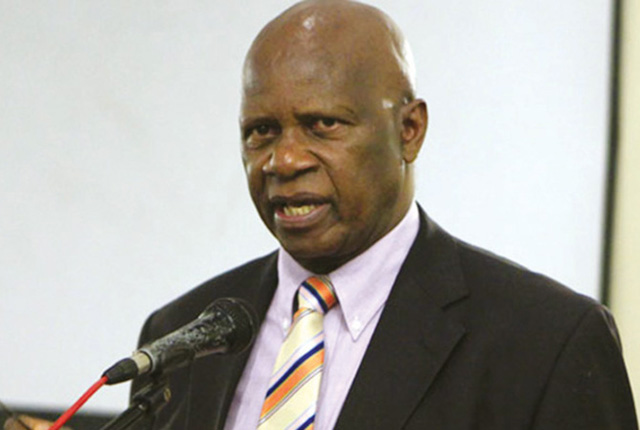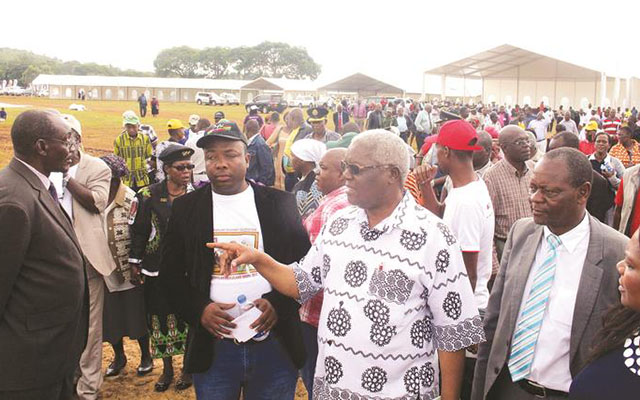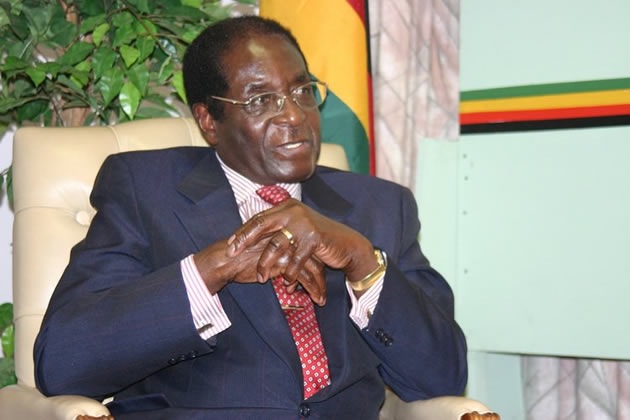Cabinet boost for power projects


Minister Chinamasa
Golden Sibanda Senior Business Reporter
CABINET, through the Ministry of Finance and Economic Development, has accorded prescribed asset status to financial instruments that have been designed to raise project funding on the domestic market for the Gwanda solar and Gairezi hydro power projects.
The State Procurement Board awarded the national projects last year after a competitive tender process won by lowest bidders to specification.
Funding raised from the local market will constitute only 15 percent of the project owners’ equity contribution while the balance of 85 percent will be sourced by the contractors from export credit agencies.
In terms of the Gwanda project, China Export and Import Bank will lead the process to raise the vendor financing while African Export and Import Bank will headline the process raise funding for Gairezi.
The 100-megawatt Gwanda solar project requires about $173 million, as per the engineering, procurement and construction contract for the project while $110 million is needed for 30MW Gairezi.
The two projects are being executed by the Zimbabwe Power Company, as part of a number of initiatives the company is undertaking to address the issue of acute shortage of power in the country.
A series of other private and public sector led projects are at various stages of implementation as part of national efforts to close the power deficit with demand at 1 400 megawatts against supply of 1 100MW.
Finance and Economic Development Minister Patrick Chinamasa confirmed yesterday that Cabinet, through his ministry, had granted prescribed asset status to the bonds meant to raise funding for the projects to facilitate investment by pension funds and insurance firms.
He said granting prescribed asset status on the energy bonds will incentivise pension funds and insurance firm to take up equity in the projects.
“I confirm that I have granted prescribed asset status to the two projects. This is to facilitate investment into the projects by insurance companies and pension funds. Both projects require equity capital of 15 percent.
“This will assist and promote pension funds and insurance firms to invest in the projects,” the minister said.
The bonds will have liquid asset status and scheduled to be listed on the Zimbabwe Stock Exchange’s debt market. The bonds also have Government guarantee. In its application for liquid asset status, ZPC said the bonds will help mitigate supply side constraints in the power sector.
Further, ZESA Holdings’ power generation unit said the liquid asset status of the two energy bonds will enable the participation of pension funds in the development of key energy infrastructure in Zimbabwe.
Initiatives to address the energy deficit are in line with medium term policy, Zim-Asset targets, which aims for energy self-sufficiency beyond 2018.
Minister Chinamasa has since written to the Pension and Insurance Commission instructing it to facilitate investment into the hydro and solar bonds.
Conferring liquid asset status on a financial instrument is a regulatory requirement for insurance and pension funds to hold a minimum of 10 percent in the asset.
Government has resorted to prescribing liquid asset status on financial instruments such as bonds to support development of infrastructure, part of the rationale being that such assets have tax benefits.
Given that pension funds hold more than $2,7 billion in funds under management, market watchers hope that the attractive energy bonds will be strongly subscribed in line with their long term liability status.
ZPC’s Gwanda solar project is backed by billion dollar asset firm, Shanghai Stock Exchange listed CHiNT Electric Co. Ltd and its technical partner while State owned Bharat Heavy Equipment Limited of India is the original equipment manufacturer for the Gairezi project.
From day of financial closure, it will take three years to complete the Gairezi hydro power project and 18 months for the Gwanda solar plant.
The two projects will go a long way in mitigating power shortage in Zimbabwe where only 40 percent of households have access to power. About 78 percent of urban dwellers have electricity compared to 16 percent in rural areas.










Comments